Think India and one of the first adjectives that comes to mind is ‘diverse’. The country is a melange of many cultures – each with its own characteristics. If you have lived in India, whichever part of the country you may belong to, one of the things that keeps you implicitly connected with your place, no matter where you go or whichever part of the world you live in, is the defining culture of that region. That ‘affection,’ if we can call it that, is undeniably a hidden part of our own selves, something that is dissolved in our identities – one that ties us firmly to our roots. These are ways of life or things that we relate to, those that we have grown up with and have partly forgotten, or very interesting cultural aspects that have been buried under layers of western influences, or certain things that we long for consciously or unconsciously in our lives whose courses have changed in such ways, that more often than not, we have moved away from our roots. These are little celebrations of our way of life, ways of a place we belong to, and in a larger sense, what identifies us in the global cultural landscape.
Now picture this. Wouldn’t you love it if you found a bookstore that fills its shelves exclusively with known and unknown works of literature in your mother tongue? A collection that you can dip into and rejoice a rare find? Or, how about this? A variety of T-shirts to choose from – only that the tees speak of the sweet nothings of your region’s culture – things that you have grown up watching. Wouldn’t that be cool? Did you know that variations of Snakes and Ladders and Ludo have existed as part of our regional cultures for ages now? And these games were played by families during our grandparents’ times? Wouldn’t it be wonderful to play the Indian versions with our own children? Or just when you are thinking you need a break, how about unwinding by watching a play in your native language? The connection that you may feel when watching it is definitely worth it, isn’t it?
Well, there are actually immensely creative people who have gone that extra mile to make all these things possible. And perhaps, there are many, many more such initiatives happening this very instant and this could very well be the tip of the iceberg. The bottomline is this: ventures such as these help people maintain the ‘connect’ with their regional culture and in such interesting ways!
When we speak of culture, and initiatives that help you connect with your own, the Tamilian and his or her connection with the Tamil culture could very well be considered a case in point. And, looking around, it doesn’t take long to single out ventures that have Tamil culture at the core or as an inclusive part of its mission.
The Tamil Connection
Chennai-based Dude Tamizha is one such interesting idea. Conceptualised, implemented and managed by Nandhini Charanyaa and J.Senthilnathan, Dude Tamizha celebrates the spirit of Tamil culture in a light-hearted way. Their line of T-shirts is inspired by different aspects of the Tamilian way of life. The duo, who were part of the advertising industry wanted to create a new and innovative product. “We wanted to create a new brand, something that appeals to us. We are basically Tamilians and love lot of things related to Tamil Nadu. So we decided to do something related to Tamil, with humour as the platform,” says Nathan.
Chennai Drama House, a Tamil theatre group, has an equally interesting story on its genesis. The troupe, which has been around since 2008, came about because a bunch of friends from Vidya Mandir School, Chennai, decided to recreate the good times they had in school, staging many successful skits. Says Vivek Rajagopal, the brain behind the group and the Writer and Director of its plays, “When we all finished college and started working, we were looking to recreate the good times we had in school and we zeroed in on the Tamil theatre as the best forum to unleash our creative side.”
Atta Galatta, a Bangalore-based bookstore and Kreeda, a games venture based in Chennai have a broader operating focus, of which Tamil culture is an important part.
Atta Galatta focuses on Indian writing, particularly vernacular literature. Apart from Tamil titles, the shop also showcases books in Kannada, Telugu, Malayalam and English. Subodh Sankar, who founded Atta Galatta, along with wife Lalitha Lakshmi, says that their common love for books prompted them to open a bookstore. Quiz him why regional literature and he responds, “It was a constant challenge for both of us, as readers of Tamil literature, to find vernacular writing in the mainstream bookstores”. Further, enquiring around, he realised that those who read Tamil books but lived outside the state, purchased the books from Tamil Nadu when they went there. Similarly, those who wanted to pick Kannada books had to go searching for them in towns or in the sidewalks. The demand, he says, made them decide to focus on Indian writing.
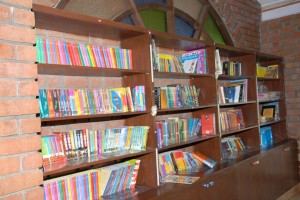
Kreeda’s Tamil connection goes over a decade back in time. Kreeda was born as a result of a research conducted by an editorial agency in Chennai. The research was about traditional Indian games and subsequently, it extended to an effort of reviving the games that are dying. A host of traditional Tamil games such as Aadu Puli Aatam, Parama Pada Soppanam, Kattam Vilayattu, Bambaram and Pallanguzhi feature in Kreeda’s list of games. Why is that the case? Answers Vinita Sidhartha, who heads Kreeda, “Yes, we have a lot of games that are Tamil, but it’s a factor of whichever version of the game we get to first. Many traditional games are similar across the board. There may be regional variations but for all intents and purposes they are the same.” So apart from Tamil games, Kreeda has also been involved in researching and identifying games in other regions of India.
Research as the Base
Sidhartha points to a disturbing trend – the fact that households have moved away from playing traditional games. “Fewer children live with their grandparents these days and further, even within nuclear families there is less time being spent together as a family,” she reasons. Consequently, even though children today have heard of games like Pallankuzhi and Bambaram, they do not have a strong emotional connect with traditional games. Lack of awareness, the coming in of games from the West and more importantly, absence of documentation on how traditional games need to be played are some of the reasons why they have begun fading out from our lives. Kreeda, therefore, has relied extensively on research to build its game collection. “Research about the games is an on-going effort; we are always talking to people and documenting the procedures, cultural components, the way people play, and the sociological aspects,” Sidhartha elaborates.
Atta Galatta too has an interesting research methodology. “We’ve tried to create a ‘panel’ of people that help us select books in each language. Each person in this panel has helped us with a book list, and compiling the list from these panelists has helped us identify what books to carry,” informs Sankar. These panel members are either a part of the publishing world or are authors or book lovers. Although Atta Galatta was launched only in March 2012, Sankar and Lakshmi have been working on the idea for over a year. Their research also involved identifying as many publishers and distributors as possible. “We have around 600 Tamil books as of now, and the list is growing on an almost weekly basis,” Sankar mentions.
Taking the Humour Route
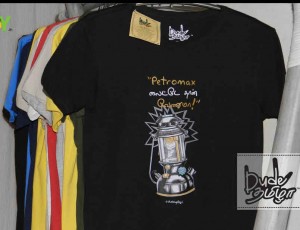
Meanwhile, Dude Tamizha’s approach has been more about understanding the pulse of what people will really enjoy, and the answer, no doubt, is humour. “We stand out because we are whacky and we have the humour,” says Nathan. Their trendy Tees are a testimony. One of Dude Tamizha’s T-shirts carries the message, ‘Petro Max Lightey Thaan Venuma?” (Do you want Petro Max Light Only?) – a popular dialogue from a comedy sequence in a Tamil film. They also have T-shirts that say ‘Coffee Kudigarargal Club – Cheers!’, ‘How to Vittufy Bambaram’, ‘Recycling My Amma’s Way’ – an indication of the Tamil way of throwing out junk and newspapers and buying a new bucket in exchange. Adds Nandhini, “If the Tamil is sugar-coated, people will pick. We have realised this slowly. Today, if you mix English and Tamil, people like it. They want to flaunt Tamil in a cool way.” And this mix of English and Tamil is obvious from the brand’s name too. Many buyers of Dude Tamizha’s English-Tamil Tees are from the 20-35 age group. Ask Nandhini and Nathan if they mean the children of the 80s and they chuckle in agreement. “Yes, they relate to our ideas a lot…The IT and business professionals are the chaps who buy more,” says Nandhini.
Chennai Drama House too has built its plays solidly on humour. The theatre group, which consists of working professionals and students aged between 20 and 27, has three plays to its credit. “The USP of our plays has been clean humour sans vulgarity,” Karthik Bhatt, one of the members, points out. Chennai Drama House’s first production, Kandapadi Kandupidi was a full-length comedy and so was their second play, Indru Poi Netru Vaa, which also won many awards. The team has recently come out with its third production Kurukku Vazhiyil Oru Traffic Jam, a comedy play again, keeping in line with the encouraging response it received for its first two plays. “Our intention is to draw more youngsters into the drama-watching fold and make them aware of the existence of a vibrant and challenging art form,” Bhatt opines. And humour, no doubt, is a fine route to take!
Going the Activities Way
If humour is one way to take Tamil and the Tamilian way of life to people, interesting activities that involve them as part of the process is yet another way. Atta Galatta does just that. Says Sankar, “The focus of Atta Galatta is to grow into a venue for all kinds of literary activity. We’ve started work on this, by creating a calendar of events that are based around reading, writing, storytelling, theatre, etc.” He believes that these are ways by which literature can be shared among people. Sankar also makes another encouraging point. There’s this constant worry that today, the English-oriented academic environment is taking the focus away from reading and understanding vernacular literature. Sankar, however, differs in his point of view. “From the response we’ve seen so far, we believe that the notion that English oriented academics is destroying regional language literature is not as pronounced as people make it out to be. Most people who visit the store converse in English with us, and with each other, but are picking up a Tamil or Kannada book to read,” he observes.
For its part, Kreeda too has been very active with its workshops to create awareness and build interest for traditional games. Kreeda has conducted workshops in schools, not just for children but for teachers too. It has also conducted inter-school competitions for children in games such as Aadu Puli Aatam and Pallanguzhi. “Whenever we have workshops, we see parents and children are both around. The response from both segments has been fantastic,” says Sidhartha, on a positive note. And she insists that the focus of these games is to have fun, and fun is such an important part of the human psyche. “Games,” she says, “are one of the true sources for spontaneous laughter.”
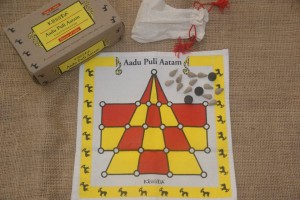
Repackaging is the Key
The trend then is to repackage your offering and make it attractive for today’s audience. Sidhartha agrees. The games, even though they are traditional, should have a global quality, she feels. This means the games have to be designed such that they look attractive and fascinating, thus creating the desire to play them. “The biggest compliment for us is when someone remarked on how beautiful our games are. It’s not just the games themselves, it’s how they are packaged as well,” she says.
Theatre too, it appears, undergoes its share of transformation. Chennai Drama House, for instance, stays away from clichéd themes such as family, relationships etc. –themes, they say, that are already doing the rounds. For this young group, ‘contemporary’ is the watchword. “Our themes are contemporary and we focus on those that appeal to an entirely new generation of theatre audience. This, we feel, is essential in getting people to come and watch Tamil plays,” shares Bhatt, reiterating this trend.
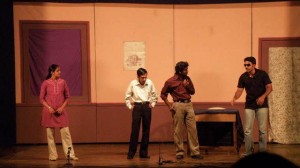
Dude Tamizha’s shop space is a fine example of repackaging. Their shop in Chennai is modelled like a Tea Kadai or a Tea Shop. “The Tea Kadai is true Tamilian identity,” says Nandhini, who along with Nathan, developed the concept and look of the shop, which has glass jars, lanterns, hanging bananas and a tea pot, put together in such a way that it looks like a ‘cool’ tea shop. In fact, this is true of their business model itself. “Tamil on T-shirts is definitely not a new idea, but the way we have done it is completely innovative,” says Nathan.
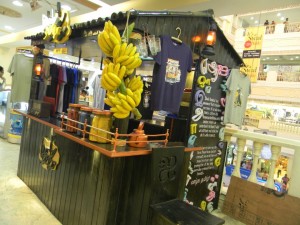
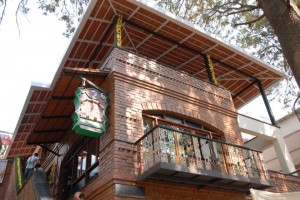
Atta Galatta’s tastefully designed building that gives it the feel of a traditional home is also a fine instance of giving ‘cool’ a new meaning. In fact, the building surrounded by five silver oak trees has been drawing lot of praise. With the brick walls and earthy colours, Chettinad pillars and wooden chairs, Sankar and Lakshmi have given their bookstore a refreshing look – a new perspective to a bookstore. Regional literature, bread and cup cakes, and various literary activities co-exist in this interesting space. That sure is a tempting package!
They say, ‘We love it’!
Atta Galatta attracts people of all age groups. And most of them come looking for books with specific requirements in mind, according to Sankar. “We’ve had very few people that have come to simply browse, and we believe it’s because of the focus that we have,” he adds.
Dude Tamizha’s popularity is evident from the fact that they initially started off by selling their T-shirts on Facebook and it garnered a lot of positive reaction. Yet, when they decided to expand the business by opening a shop, they were a little hesitant. “We took a big risk actually. Operating under a Tea Kadai and selling Tamil T-shirts is something very niche and we were not sure how people would react to our creative ideas. But it has been going good,” admits Nathan. Nandhini and Nathan are keen on capturing the young market too, those below 20 years of age and they hope to achieve it by going the sugar-coated Tamil way!
Kreeda’s games have been popular not just in India but globally too. According to Sidhartha, outside of India, it’s not just the Indians who buy them. “It’s very encouraging,” she adds.
Chennai Drama House holds that Tamil theatre continues to be more about personalities than troupes themselves in terms of crowd pull. In spite of this, good work is being appreciated these days, which is encouraging. Says Rajagopal, “Of late, people are appreciating good work and there is a fair amount of crowd for relatively unknown troupes that are performing well.” Apart from Chennai, the group has also performed in Bangalore, Secunderabad and Salem. Interestingly, according to Bhatt, the audience turnout and response at these places have at times been more than what they have seen in Chennai!

Dreams Unlimited
The positive response that these ideas have been eliciting, prompts their creators to dream more of a brighter, more fulfilling future. After all, what are initiatives close to the heart without a bunch of dreams? While Kreeda is hoping to open up to more people throughout India through its soon-to-open online shopping section and sees itself launching more games and interacting even more with people, Atta Galatta is keen on strengthening its focus on creating events that promotes literature and literary activity. They are also looking to increase the number of titles in their store. Expansion features in Dude Tamizha’s future plans. They want to open more outlets in other cities inside Tamil Nadu and are also contemplating on expanding their merchandise – these would be something different and not stuff like coasters or pen stands or coffee mugs! Chennai Drama House intends to stick to their clean humour principle and hopes to bring more new audiences to the Tamil stage through their performances.
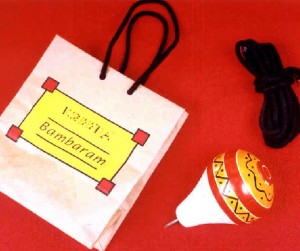
Heart-warming, indeed! The spirit of these people and whatever they are doing to sustain the connect between a culture and its people, and what they hope to achieve tomorrow. In the long run, let’s hope that this lovely melange of measures achieves what is possibly the biggest mission of such endeavours – taking Tamil and other such regional cultures to not just Indians but to the global audience as well. And let’s hope too that many more of such interesting ideas bloom; for the sake of a lovely future. We need them.
